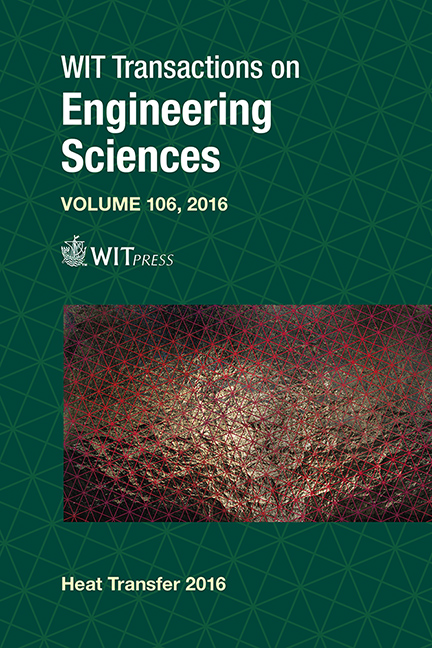Application Of Frictional Heat Signatures For Prediction Of Structural Vibrational Characteristics
Price
Free (open access)
Transaction
Volume
106
Pages
12
Page Range
65 - 76
Published
2016
Size
1,472 kb
Paper DOI
10.2495/HT160071
Copyright
WIT Press
Author(s)
S. M. Talai, D. A. Desai, P. S. Heyns
Abstract
Frictional damping of vibrating components such as turbomachinery blades, generally result in a temperature increase at the blade-lacing wire interface due to blade harmonic motion during operation. Interestingly, studies have shown that temperature is amongst the most common indicators of structural health of a dynamic component. Nevertheless, its application to measurement of vibration characteristics has not yet been contemplated and thus relatively unique. Hence, the aim of this work is to develop a novel technique for acquiring structural vibrational characteristics from frictional heat signatures. To facilitate this, an experimentally validated finite element model (FEM) was developed. The skillful manipulation of heat conduction equations and a finite difference approach; successfully identified the vibration behavior. The implications and benefits of the developed technique for structural integrity and condition monitoring applications are numerous, for example; the early detection of structural defects. Furthermore, this approach has great potential of overcoming most of the limitations experienced with conventional methods such as strain gauging which encounter fatigue during vibration measurement and may thus compromise measurements.
Keywords
infrared thermography, frictional heat signature, vibration, finite element modelling





